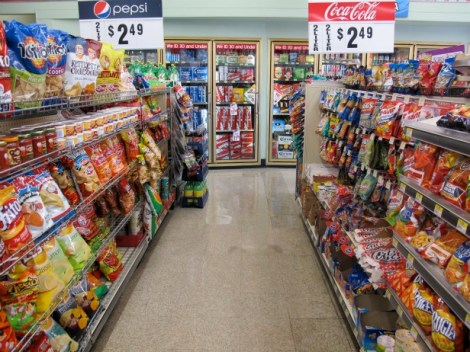The latest New York Times Magazine features a lengthy report on the horrifying ways in which processed food purveyors are sneaking tasty but disease-causing extras into our snacks.

The piece, adapted from Michael Moss’ forthcoming book Salt Sugar Fat: How the Food Giants Hooked Us, is well worth devouring. In it, Moss tracks the development of consumer-friendly products such as Cherry Vanilla Dr. Pepper and Lunchables from research and development in the late ’80s to the obesity epidemic of our modern times. Moss writes:
So why are the diabetes and obesity and hypertension numbers still spiraling out of control? It’s not just a matter of poor willpower on the part of the consumer and a give-the-people-what-they-want attitude on the part of the food manufacturers. What I found, over four years of research and reporting, was a conscious effort — taking place in labs and marketing meetings and grocery-store aisles — to get people hooked on foods that are convenient and inexpensive. I talked to more than 300 people in or formerly employed by the processed-food industry, from scientists to marketers to C.E.O.’s. Some were willing whistle-blowers, while others spoke reluctantly when presented with some of the thousands of pages of secret memos that I obtained from inside the food industry’s operations. What follows is a series of small case studies of a handful of characters whose work then, and perspective now, sheds light on how the foods are created and sold to people who, while not powerless, are extremely vulnerable to the intensity of these companies’ industrial formulations and selling campaigns.
Does it surprise you that food giants Kraft, Pepsi, and General Mills use extensive research-and-development processes designed to find a consumer’s ideal “bliss point”? Does it surprise you that said “bliss point” is a combination of way more sugar, salt, and fat than any of us would load up on a plate otherwise? Does it surprise you that this makes those corporate food giants a huge ton of cash?
None of these things surprised me. Moss’ piece is scary, and these corporations’ tactics are extraordinary, but they seem right in line with the marketing ploys that have shaped our well-padded American lives for the last three decades. What did surprise me was the story of Jeffrey Dunn.
Dunn, a former executive at Coca-Cola, is now an independent marketer trying to sell a far less nefarious bagged snack food.
He talked about giving the product a personality that was bold and irreverent, conveying the idea that this was the ultimate snack food. He went into detail on how he would target a special segment of the 146 million Americans who are regular snackers — mothers, children, young professionals — people, he said, who “keep their snacking ritual fresh by trying a new food product when it catches their attention.”
He explained how he would deploy strategic storytelling in the ad campaign for this snack, using a key phrase that had been developed with much calculation: “Eat ’Em Like Junk Food.” …
The snack that Dunn was proposing to sell: carrots. Plain, fresh carrots. No added sugar. No creamy sauce or dips. No salt. Just baby carrots, washed, bagged, then sold into the deadly dull produce aisle.
“We act like a snack, not a vegetable,” he told the investors. “We exploit the rules of junk food to fuel the baby-carrot conversation. We are pro-junk-food behavior but anti-junk-food establishment.” …
He drew from the bag of tricks that he mastered in his 20 years at Coca-Cola, where he learned one of the most critical rules in processed food: The selling of food matters as much as the food itself.
I’m surprised. I’m scared. I’m also intrigued. With great power comes great responsibility, Jeffrey Dunn. And I can only imagine what you could do for kale chips.



